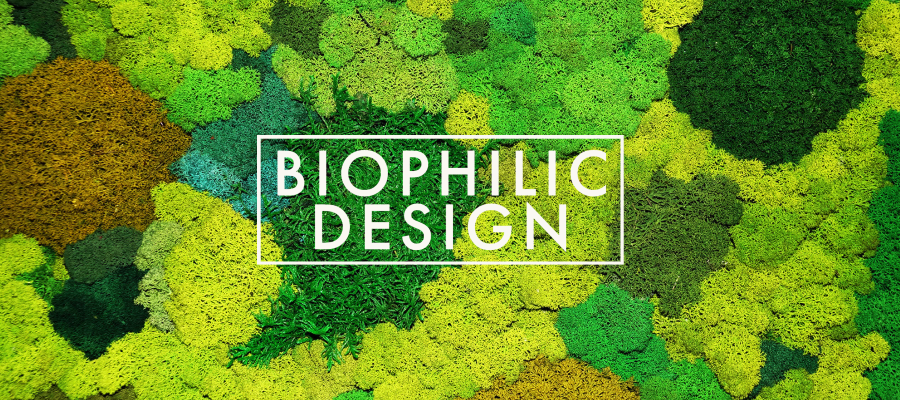
Biophilic Design and Nature’s Health Benefits
At NeoCon 2023 we continued to see biophilic design becoming more and more important in commercial interior design. That is because experiencing nature is good for our physical and mental health. Over the past century, humans have moved from areas surrounded by nature to more urban environments with less access to green spaces. However, studies increasingly show many benefits to living in environments surrounded by nature. According to a 2019 study by Matthew White at the University of Exeter, “people who spend two hours a week in green spaces are substantially more likely to report good health and psychological well-being” than those that did not. Richard Louv, the author of Last Child in the Woods, published in 2005, notes that “nature is not only nice to have, but it’s a have-to-have for physical health and cognitive functioning.”
But what are the physical and mental health benefits of spending time in nature? And what can designers do to tap into nature’s potential?
Nature’s Effects on Physical Health
As long as individuals feel safe in their environments, there are many physical benefits to being in nature, many of which are tied directly to mental health benefits (see the following section to learn more). Time in nature can relieve stress, which can lower blood pressure and heart rate, decrease stress hormones, and increase the immune system’s function. All of these factors can help reduce the risk of cardiovascular disease. Additionally, time in nature can promote a more active lifestyle – which further contributes to the benefits listed above.
Nature’s Effects on Mental Health
The mental health benefits associated with time in nature are dependent on many different factors, including an individual’s socioeconomic status, residential location, occupation, and age, to name a few. However, for many individuals, time in nature and exposure to sunlight can improve mood and contribute to a positive and happy well-being. This can lead to reduced stress, a sense of meaning, increased cognitive function and memory, a creative mindset, and better performance in daily tasks. Additionally, access to nature can help boost a sense of community and offer gathering spaces for neighbors in urban communities.
Introduction to Biophilic Design
When thinking about incorporating nature into commercial design, start by exploring the idea of biophilic design. The term biophilic means “the human tendency to interact with other forms of life.” In this design instance, biophilic refers to creating an environment that incorporates nature harmoniously. Many workplaces create spaces that keep nature in mind to boost worker productivity and work to be eco-friendly.
Some ways to achieve biophilic design are:
- Incorporating indoor plants into your design concept – try a living wall!
- Designing with lots of access to natural light – windows, skylights, open-air spaces.
- Incorporate water features – fountains and indoor ponds are two examples.
- Mimic patterns found in nature in your design, and consider designing with natural materials (stone, wood, etc).
- Bring in fresh air!
- Choose muted and more natural tones and colors in your designs.
- Incorporate sound and smell to capture all the senses that nature can enhance.
Additional Reading
Looking to learn more? Check out some of the resources we linked to and some of our favorite articles we came across in our research.
Ecopsychology: How Immersion in Nature Benefits Your Health – Jim Robbins, Yale Environment 360
The Outdoors and Nature – Mental Health America
Biophilic Design is Good for Your Health and How to Use It at Home – MasterClass
Share this post
Author
DESIGN/COLOR TRENDS AND AWESOME INFORMATION IN YOUR INBOX
Sign up for our monthly trend letter




